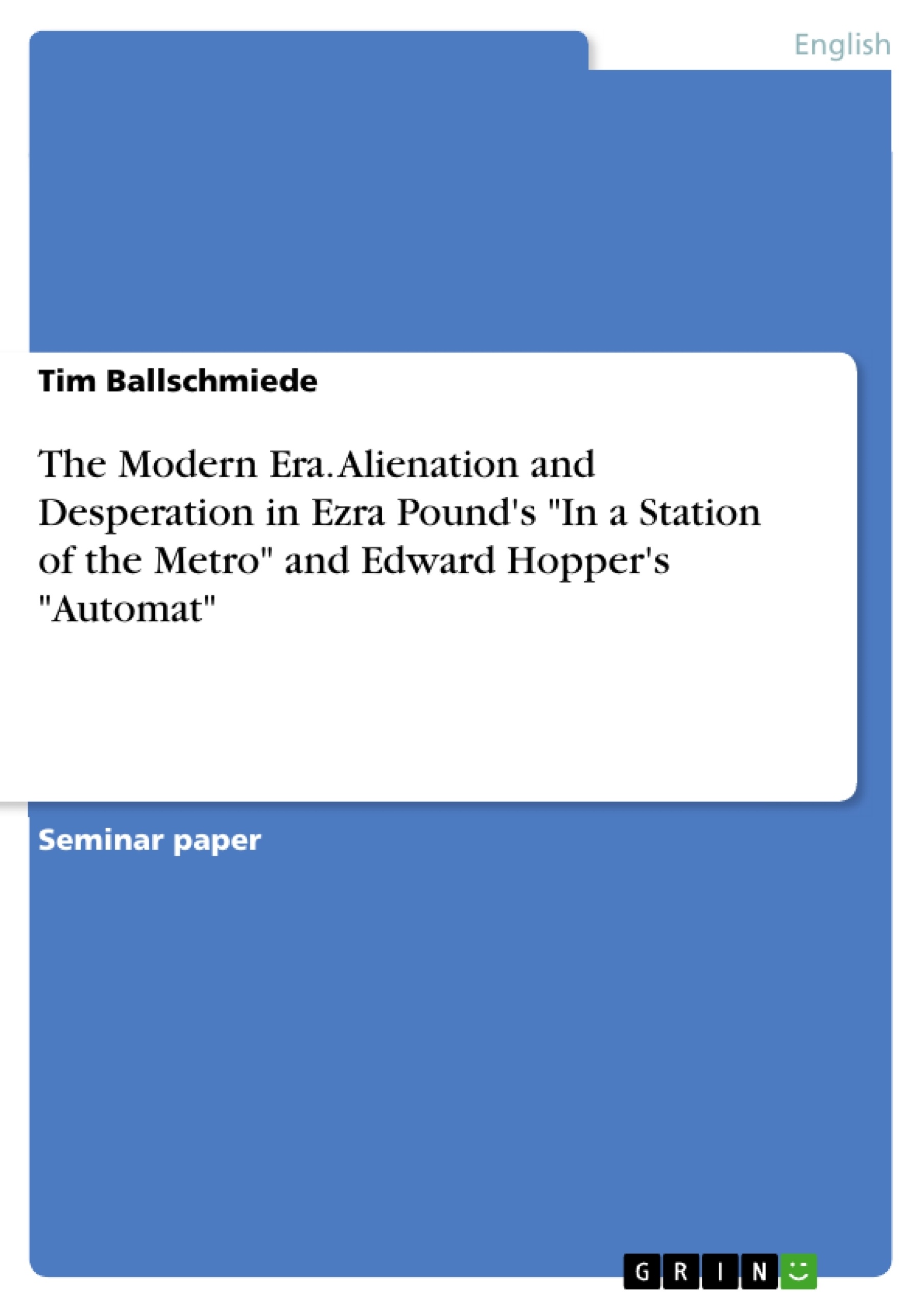In the Modern period, the American lifestyle is growing and developing gradually. With the improvement of the railroad system, such as the use of steel rails instead of iron rails, everything in life is moving faster. Furthermore, America’s need for workers combined with cheaper train and steam ship tickets
have caused a new wave of mass immigration. Although life in America seems appealing, these positive aspects are overshadowed by hard times.
Especially after the two World Wars, which caused a lot of pain and death, the world is fragmented and the devastation and alienation of people, both outer an inner devastation, has started to take place. Furthermore, through industrialization
and mass production, human beings are in a continuous hurry and there is restlessness. Due to the fact that people always seem to be in a rush, life is chaotic and fragmented.
The alienation and desperation of the individual in the Modern era can be seen in Edward Hopper’s painting "Automat", which was published in 1927, and in the poem “In a Station of the Metro“ by Ezra Pound from 1916.
Therefore, this term paper will illustrate the characteristics of the Modern Era, especially in terms of literature, by analyzing and comparing the painting and the poem.
Inhaltsverzeichnis (Table of Contents)
- A. Introduction: The Alienation and Desperation of the Individual in the Modern Era
- B. The Modern Era
- C. Automat by Edward Hopper
- I. Content
- II. Modern Features in Automat
- D. "In a Station of the Metro" by Ezra Pound
- I. Ezra Pound's Key Ideas of Imagism
- II. Modern Features in Ezra Pound's Poem
- E. Conclusion: Desperation and Alienation in the Modern Period
Zielsetzung und Themenschwerpunkte (Objectives and Key Themes)
This term paper aims to examine the characteristics of the Modern Era, particularly in literature, by analyzing and comparing Edward Hopper's painting "Automat" (1927) and Ezra Pound's poem "In a Station of the Metro" (1916). It explores the themes of alienation and desperation experienced by individuals in the Modern period, a time marked by significant historical events and societal shifts.
- The impact of historical events, such as the American Civil War, World Wars, and the Great Depression, on American culture and literature.
- The portrayal of alienation and desperation in the Modern period through artistic mediums like painting and poetry.
- The exploration of silence and simplification as key characteristics of Modern art.
- The influence of Modernist movements, such as Imagism, on literary expression.
- The role of the individual in a rapidly changing world, marked by industrialization and urbanization.
Zusammenfassung der Kapitel (Chapter Summaries)
The introduction sets the stage for the analysis by introducing the concept of alienation and desperation in the Modern Era. It emphasizes how these themes are evident in Edward Hopper's "Automat" and Ezra Pound's "In a Station of the Metro."
Chapter B delves into the historical context of the Modern period, highlighting key events such as the American Civil War, the Great Depression, and the World Wars. It explores how these events shaped American culture and fostered a sense of fragmentation and instability in society.
Chapter C focuses on Edward Hopper's painting "Automat," examining its content and analyzing its modern features. It explores the themes of silence and simplification in Hopper's work, drawing connections to his personal life and artistic style.
Schlüsselwörter (Keywords)
This term paper focuses on keywords such as alienation, desperation, the Modern Era, American culture, literature, art, Imagism, Edward Hopper, "Automat," Ezra Pound, "In a Station of the Metro," silence, simplification, and historical events.
- Quote paper
- Tim Ballschmiede (Author), 2014, The Modern Era. Alienation and Desperation in Ezra Pound's "In a Station of the Metro" and Edward Hopper's "Automat", Munich, GRIN Verlag, https://www.grin.com/document/288984



